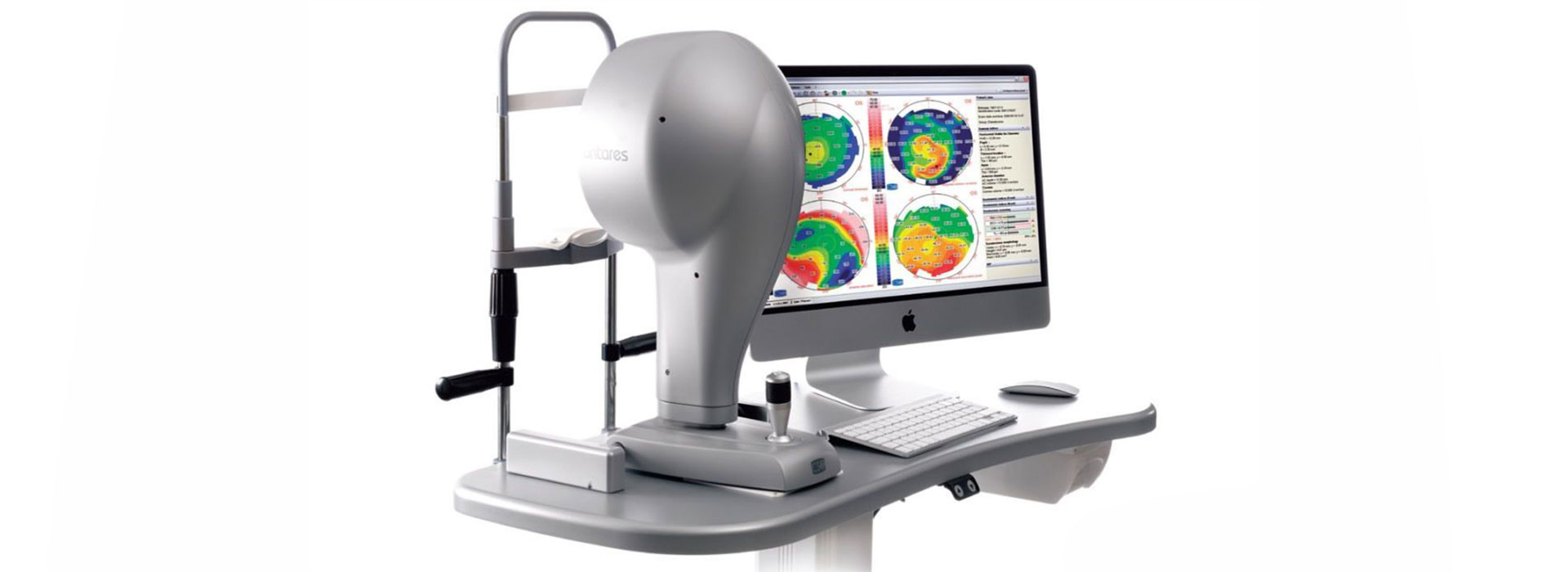CORNEAL DIAGNOSTIC PROCEDURES
Cornea
Imagining the eye as a watch, it could be said that the cornea is the see-through glass that allows us to watch inside. It is the eye’s outer and curved layer that, along with the other structures, works as a lens for the light to pass through and bring the visual information to the retina. The cornea can be affected by numerous disorders as degenerative disorders, inflammations, infections, abrasions and genetic dystrophy.
The Astigmatism is an alteration of the cornea’s curved edge which results in distorted or blurred vision at any distance. Laser surgery involves using a laser to permanently alter the shape of the cornea to improve vision.
The main solutions to cornea disorders are:
- Punctum Plug
- Intacs
- PRK and Lasik
- Laser a Femto-Laser
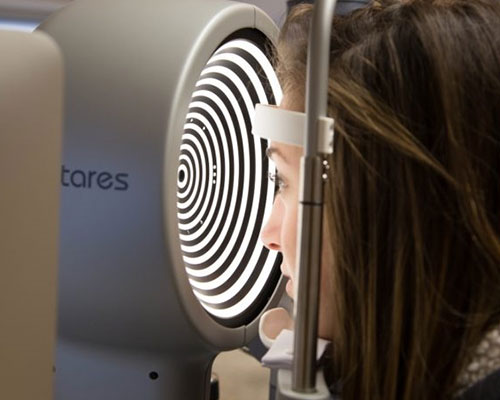
Punctum Plug
Punctal plug is a tiny device, a “plug״ placed in the eye’s tear ducts to stop fluid from draining from the eye.
It is considerate the most effective treatment for the dry eye syndrome, an eye condition that affects 10-15% of the adult population. It occurs when the tears aren’t able to provide adequate lubrification for the eyes leading to inflammation, blurred vision and persistent pain.
What is it?
Punctum Plug is a small medical device in silicone that is inserted through a specific procedure.
What is it for?
It is recommended to people with chronic dry eye and to trat people affected by ocular surface disease as corneal ulcer, conjunctivitis, blepharitis, keratitis, eyelid ulcers and recurring corneal erosion.
It can also be used to help with contact lens intolerance, to improve aye drugs‘ assimilation, to keep a good level of eye bacterial flora, to treat lacrimal duct stenosis and to speed the recovery process of surgical patients.
Intacs
Intacs is the brand name for a medical device that is used in the treatment of the eye disorder known as keratoconus which affects 1 out of 2000 people.
What are intacs?
Intacs are very small clear plastic arcs that are designed to be inserted into the substance of the cornea in people who have keratoconus to reduce the irregularities and deformations caused by the condition.
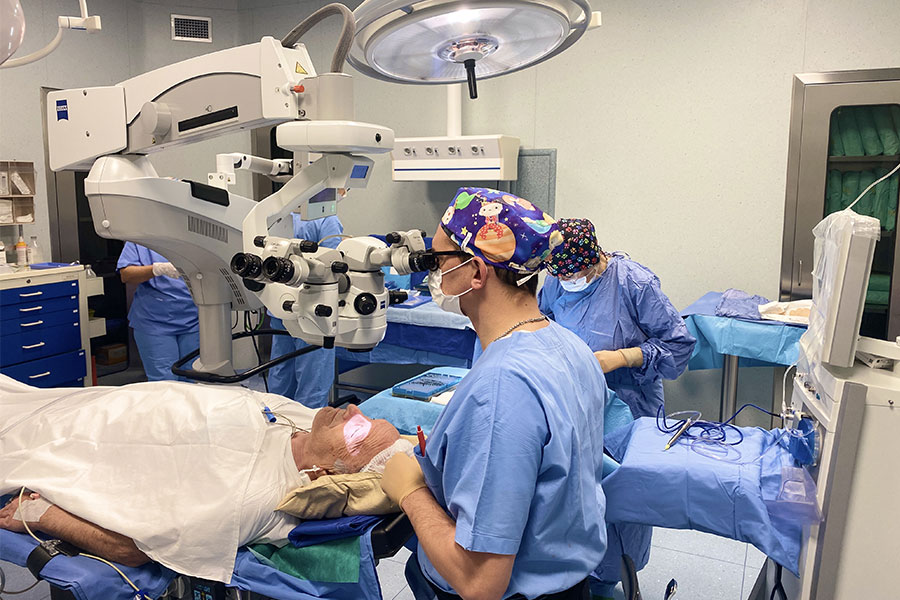
How is the Intacs procedure performed?
The Intacs procedure is a painless outpatient surgery, performed through the help of analgesic eye drops.
Compared to the traditional surgical methods, as the cornea transplant, the insertion of the segments is an innovative and not invasive treatment. The Intacs are safely placed into the substance of the cornea, in the peripheric area.
Anyway, if until not so long ago the cornea transplant seemed the only treatment possible, today there are more options to choose from.
PRK and Lasik
A special type of cutting laser is aimed to the front part of the cornea, the pupil’s centre and it is activated by the surgeon. Every pulsing beam removes a quarter micron, that is a quarter thousandth of millimetre.
How is PRK done?
During PRK, an eye surgeon uses a laser to reshape your cornea. This laser, which delivers pulsing beam of ultraviolet light, is used to scrape the surface of the cornea removing the cornea epithelium, the outermost layer of the cornea. It takes up two or three days for it to heal and there will not be any scars left. After the procedure the patient’s eye is protected with a special contact lens that will be removed by the ophthamologist two or three days after the practice, taking away most of the pain caused by the scraping.
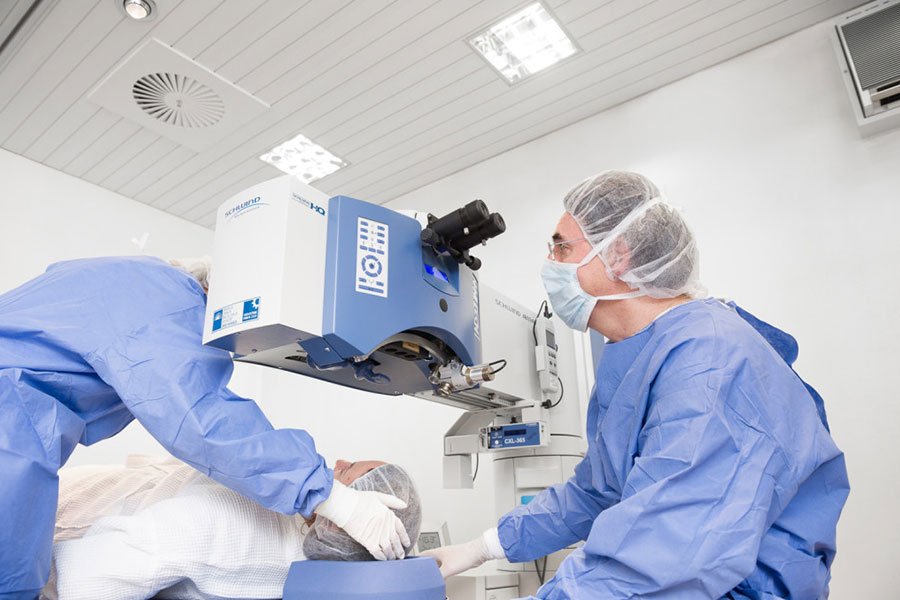
How is Lasik done?
During the LASIK procedure, a specially trained eye surgeon first creates a precise, thin hinged corneal flap using a microkeratome. The surgeon then pulls back the flap to expose the underlying corneal tissue and then the excimer laser ablates (reshapes) the cornea in a unique pre-specified pattern for each patient. The flap is then gently repositioned onto the underlying cornea without sutures: the healing process of the cut flap is up to the growing back epithelium cells.
Comparing the two techniques
PRK is a totally laser-based procedure, easier to perform and safer in terms of healing time.
LASIK is a mixed procedure involving laser and surgery and, compared to the PRK, it cuts off a thicker portion of the cornea making it weaker and more prone to traumas.
Both procedures are considered safe, however Lasik’s complications may be stronger than PRK ones.
Laser technology and femtosecond laser
Femto laser is a new generation laser that can perform high level safety corneal cut of different shape and depths. Every pulsing beam generates a micro bubble that, together with other micro bubbles, creates a highly precise cut.
Characteristics and benefits
- It doesn’t require applanation
- Extremely high precision
- Fast recovery
- Painless procedure
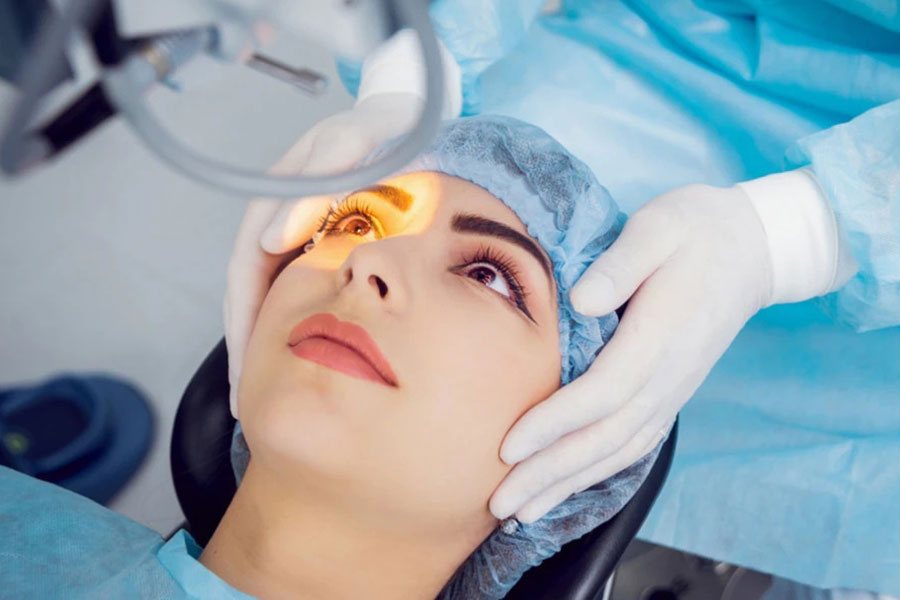
Other innovative femtoseconds laser applications
Femtosecond can be particularly useful in correcting astigmatism and other severe refractive errors thanks to the precision and the complete control it gives on the shape and depth of the cuts. The Femto Laser is also used for the the preparation of tunnels for the insertion of the instrastromal rings for keratoconus that allows for greater ease in preparing the cut with a depth of up to 600 microns. It also allows for greater control of the variability of the parameters. It can also be used in keratoplasty, preparing a perfect circular cut up to 1200 microns that minimizes post-intervention corneal deformation.
